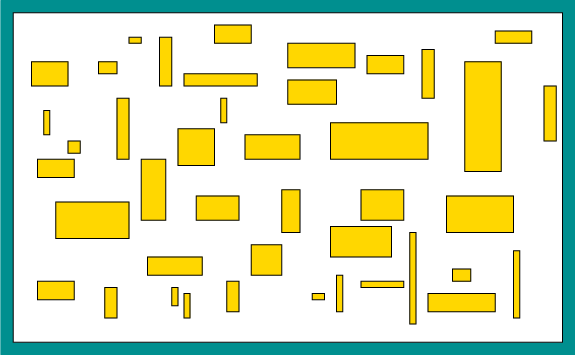
Next: Lower bounds for motion Up: 6.5.1 Lower Bounds Previous: Languages
Since an easier class is included as a subset of a harder one, it is
helpful to have a notion of a language (i.e., problem) being among the
hardest possible within a class. Let X refer to either P, NP, PSPACE,
or EXPTIME. A language ![]() is called X-hard if every language
is called X-hard if every language
![]() in class X is polynomial-time reducible to
in class X is polynomial-time reducible to ![]() . In short,
this means that in polynomial time, any language in
. In short,
this means that in polynomial time, any language in ![]() can be
translated into instances for language
can be
translated into instances for language ![]() , and then the decisions for
, and then the decisions for
![]() can be correctly translated back in polynomial time to correctly
decide
can be correctly translated back in polynomial time to correctly
decide ![]() . Thus, if
. Thus, if ![]() can be decided, then within a
polynomial-time factor, every language in X can be decided. The
hardness concept can even be applied to a language (problem) that does
not belong to the class. For example, we can declare that a language
can be decided, then within a
polynomial-time factor, every language in X can be decided. The
hardness concept can even be applied to a language (problem) that does
not belong to the class. For example, we can declare that a language
![]() is NP-hard even if
is NP-hard even if
![]() NP (it could be harder and lie in
EXPTIME, for example). If it is known that the language is both hard
for some class X and is also a member of X, then it is called X-complete (i.e., NP-complete, PSPACE-complete, etc.).6.8 Note that because of this uncertainty regarding P,
NP, and PSPACE, one cannot say that a problem is intractable if it is
NP-hard or PSPACE-hard, but one can, however, if the problem is
EXPTIME-hard. One additional remark: it is useful to remember that
PSPACE-hard implies NP-hard.
NP (it could be harder and lie in
EXPTIME, for example). If it is known that the language is both hard
for some class X and is also a member of X, then it is called X-complete (i.e., NP-complete, PSPACE-complete, etc.).6.8 Note that because of this uncertainty regarding P,
NP, and PSPACE, one cannot say that a problem is intractable if it is
NP-hard or PSPACE-hard, but one can, however, if the problem is
EXPTIME-hard. One additional remark: it is useful to remember that
PSPACE-hard implies NP-hard.
 |
Steven M LaValle 2020-08-14